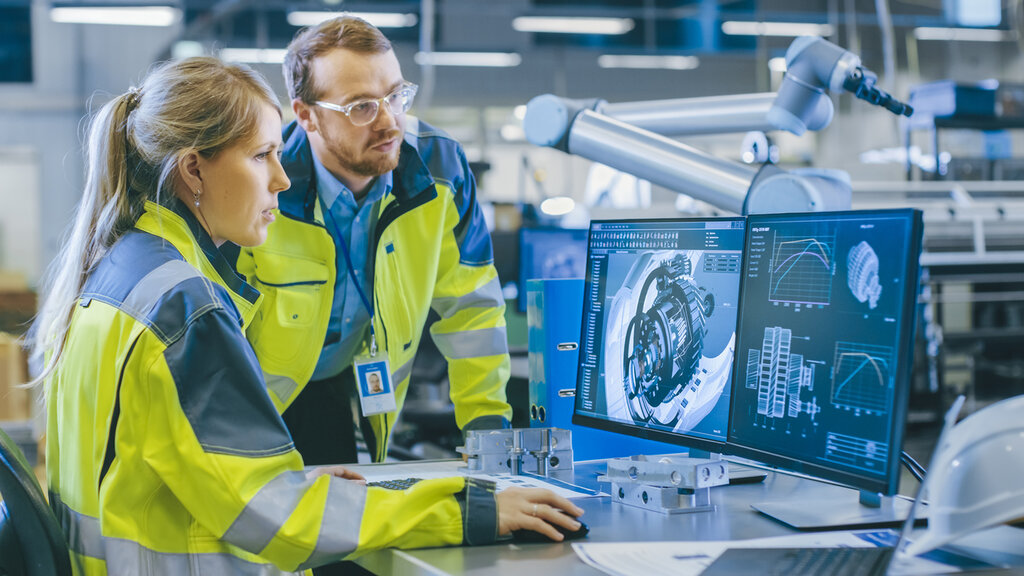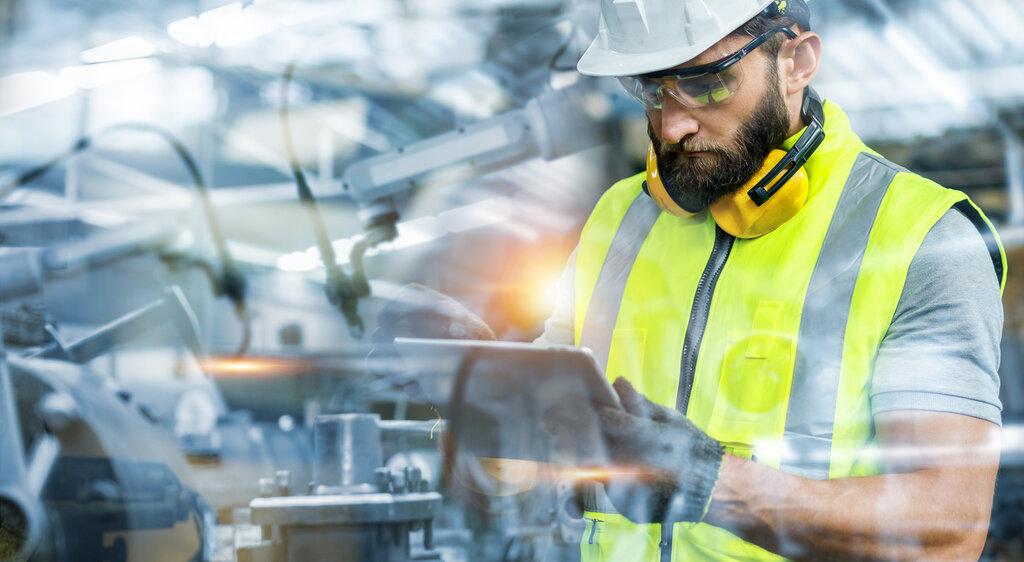Company Insight
Sponsored by Dassault Systèmes
How to Balance Sovereignty and Multinational Collaboration in Defence with Clever, Ethical Tech
by Dr Andreas Arnold, Director of Product Management, Blücher GmbH, Erkrath
Main image: A generic rendering of a missionized Bombardier Global 6500, used by the U.S. Army in its latest program for Intelligence, Surveillance and Reconnaissance (ISR).

Shaun Edsall - Client Executive in Customer Solution Experience

Prashanth Mysore - Global Strategic Business Development Director
Through their work with Australian defence primes and SMEs, Dassault Systèmes is facilitating better outcomes in digital engineering, complex project and product lifecycle management, and sovereign capability development, driving the industry's evolution and sustainability via the ethical adoption of cutting-edge technology.
Central to Dassault Systèmes is 3DEXPERIENCE. This innovative platform provides a comprehensive, real-time digital view of business activities, connecting people, ideas, data, and solutions in a collaborative environment. Amongst its capabilities is the creation and visualisation of virtual twins, enabling companies to model, simulate, and optimise products, processes, and operations before production, thus bridging the gap between the virtual and real worlds.

Shaun Edsall - Client Executive in Customer Solution Experience

Prashanth Mysore - Global Strategic Business Development Director
Tell us a bit about what Dassault Systems is doing within the Australian defence industry?
Dassault Systèmes is aiming to support defence primes and original equipment manufacturers (OEMs), right through the supply chain to SMEs and small business, bridging the gap between digital engineering and managing complex projects by facilitating better manufacturing processes and sustainment arms of defence. So, working with organisations on topics such as model based systems engineering, manufacturing execution, simulation, right through to logistics planning as well.
What capabilities are Dassault Systèmes bringing? And what do you think will differentiate you within this industry?
Primarily, we understand the importance of having secure, scalable systems in a digital environment, particularly in these complex and geopolitical times for defence budgeting and defence contracting, and the sovereign capability within that. So, working particularly with those defence primes on how to establish sovereign capability locally that allows for the best-in-class design, whether imported or local, and how that is adapted and maintained for the Australian environment and Commonwealth of Australia requirements. We bring a platform-centric approach that starts to enable collaboration across the supply chain but also the digital thread - traceability from initial requirements or concept stage, right through to manufacture, test and validation, deployment, and also decommissioning.
We offer superior traceability through the project lifecycle, whether that's with something like model-based systems engineering (MBSE) or extending into what we call the 3DEXPERIENCE platform for greater visibility across different business towers within an organisation - not just the manufacturing space, but also engineering, cyber security, and all the different silos that you might typically have.

A generic rendering of a Bombardier Challenger 650 modified for Medevac.
People and Process
What we do is we put together a framework of PPTD, which is People, Process, Technology, and Data. We’re talking about people and knowledge within the aerospace and defence industry, helping local SMEs and the local people on sovereign capabilities, based on the knowledge which we have had for the last 30-40 years. We are backed by a lot of global expertise and global industry best practices that really helps most our clients in Australia. What we are doing now is replicating and leveraging those global best practices through industry solution experiences for Australia. We have defined those industry solution experiences for say the design of a product, whether it be a submarine, an aircraft etc. So there is an established business process, we call it Industry Solution Experience, where we share the knowledge to small and medium enterprises.
Technology and Data
On the technology side, the 3DEXPERIENCE platform is based on three Cs - it is Connected, it is Contextualised, it is Collaborative. Connected means it connects your prime to SMEs and establishes a value network. It is contextualised because it brings together data, relevant simulation models, knowledge management tools, and model-based systems engineering. It's collaborative in the sense that, for example, Australia is working with global players for defence technology acquisition.
To go further into People, Process, and Technology; we work closely with academia, and are fortunate enough to be on the University of Adelaide campus. 3DEXPERIENCE is about enabling that workforce of the future, making sure they're equipped with the right skills so that they can go into industry to adopt the technology pillar and deliver results from that.
What are some of the focus areas of the Defence industry that Dassault Systèmes are looking to help customers in?
We're seeing with the Defence Strategic Review, the Surface Fleet Review, AUKUS, and other programs that the Australian sovereign supply chain is becoming more and more crucial, but in parallel, also collaborating with the UK and the US, Korea and others. I think there's some really significant programs of work being done here, particularly by multinational organisations, things like LAND 400 Phase 3 and JP9102, where having the skills and workforce in a smaller country like Australia is crucial. It's about helping these organisations with critical person risk, because the engineering pool is relatively small across those organisations. We want to help facilitate platforms and technology to ensure organisations are set for the future, while achieving faster turnaround, de-risking, and improving outcomes, all by being able to test and validate in digital models rather than physical prototypes. Essentially, identifying issues earlier, then reworking and simulating in a virtual twin. Virtual twins start by establishing the knowledge within the company through the design engineering, and that gets tightly integrated to manufacturing. The design could happen in the UK or US and manufacturing can actually happen in Australia, and that is tightly integrated to supply chain. This is one digital thread from design to manufacturing to supply chain and extending up to creating a workforce of the future.
We have companies like iLAuNCH, for example, who are very big on creating and implementing quickly, which is something Australia hasn’t had in the defence space. It’s almost like a tech industry approach to defence. What do you think the next few years look like for the defence industry and how does Dassault plan to help shape it?
The next five years is all about sovereign capabilities and bringing in the workforce of the future. Defence industry globally has issues with knowledgeable people moving on, and youngsters not joining. So, what we are working on is building the workforce of the future through augmented reality, mixed reality, and virtual reality.
At the same time, some of the key multinational players are expanding locally, such as Hanwha Defence Australia, who have adopted our 3DEXPERIENCE platform. We also have Australian Industry Content (AIC), and to your point, some of these smaller organisations being nimbler and quick to market. There seems to be a real growing ambition for these large organisations to partner in a meaningful way with the SMEs and supply chains. For us, that's a really good lever because we're well placed to support right throughout that value chain with a platform-centric approach, enabling those organisations to collaborate better. Within this, we partner with systems integrators and large consulting organisations, we also have specialised partners such as MEMKO who provide a critical sovereign capability to Australian aerospace and defence organisations, particularly in digital engineering.

A generic rendering of a Bombardier Challenger 650 modified for Medevac.
One more thing that’s important is the ethical adoption of technology. We talk about AI, we talk about quantum computing, we talk about cybersecurity. The ethical adoption of technology will really take shape in next five years because it's all about data. The ethical adoption is extremely important. At Dassault, we are working on creating a tighter framework using the 3DEXPERIENCE platform so that a global collaboration can happen easily through product lifecycle management. For any longer-term future technology project, in that life cycle the technology would have advanced, and the original plans and tech becomes obsolete. This is where product life cycle management comes into picture. Any changes to your design or requirements can easily be managed. It could be a 50-year project, and you have a digital twin of your data which really helps in actually embarking on an altogether new journey or program.
To learn more about Dassault Systèmes and the 3DEXPERIENCE platform, click here.